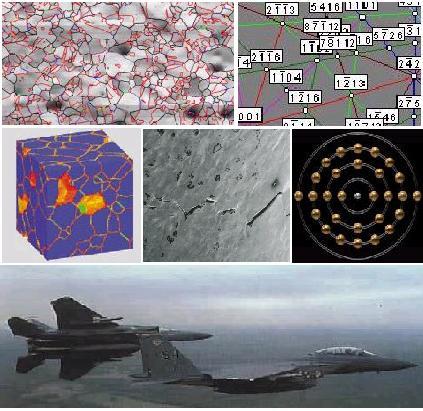
A Study of the Role of Grain-Boundary Engineering
in Promoting High-Cycle Fatigue Resistance

 |
A Study of the Role of Grain-Boundary Engineering
in Promoting High-Cycle Fatigue Resistance
|
 |
| HOME |  |
Problem:
Nickel & Titanium base
superalloys are widely used in turbine applications which require their
high temperature strength and resistance to environmental attack.
Despite the wealth of recent research on the high-cycle fatigue (HCF)
of Ti and Ni alloy turbine engine blades and disks, there have been few
studies on ways to improve the HCF resistance of these alloys through
microstructural control.
Objective: To examine the feasibility of using grain-boundary engineering techniques to enhance the HCF resistance of Ni and Ni-base superalloys. Approach: Using strain/anneal cycles to increase the proportion and contiguity of special "grain boundaries" in high-purity nickel and a nickel-base superalloy ME3, characterization of the effect of such microstructures on the stress/life fatigue properties and the large- and small- fatigue-crack propagation resistance. |
| GRAIN-BOUNDARY ENGINEERING | ||
| FATIGUE FAILURE | ||
| COMPUTER MODELING | ||
| REFERENCES | ||
| Last updated 04/12/06 by Yong Gao (ygao@lbl.gov) | ||
| Recent Publication High-Cycle Fatigue of a Nickel-Base Superalloy ME3 at Ambient and Elevated Temperatures: Role of Grain-Boundary Engineering by Y. Gao, M. Kumar, R. K. Nalla, and R. O. Ritchie, Metallurgical and Materials Transactions A, vol. 36A (12), Dec. 2005, pp. 3325-3333. |
||